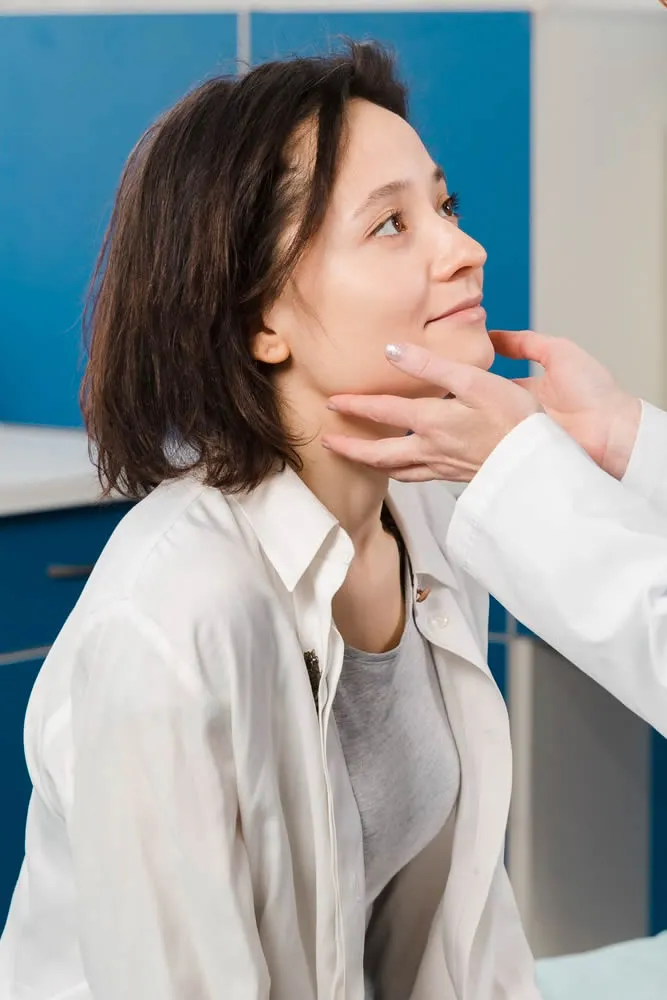What is Milia?
Milia are small, white or yellowish bumps that appear on the skin, usually on the face. They are caused by keratin, a protein that normally protects the skin, getting trapped under the skin and forming tiny cysts. Milia are not harmful or contagious, but they can be annoying or cosmetically undesirable for some people.

What are the signs and symptoms of Milia?
The signs and symptoms of milia are:
- Small, white or yellowish bumps on the skin, usually on the face.
- Bumps are dome-shaped, hard, and measure 1 to 2 millimeters in diameter.
- Bumps are not painful or itchy, and do not cause inflammation or infection.
- Bumps can appear in groups or clusters, especially around the eyes, cheeks, nose, and forehead.
- Bumps can last for weeks or months, and may disappear on their own or persist.
What are the causes of Milia?
The causes of milia depend on the type and age of the person who has them.
Some possible causes are:
- In newborns, the cause of milia is unknown. They may be present at birth or develop later.
- In older children and adults, milia are usually caused by some type of damage to the skin that traps keratin, a protein that normally protects the skin, under the skin. This can include burns, blisters, sun damage, skin procedures, or heavy skin creams.
- In some cases, milia can also be caused by genetic conditions that affect the skin, such as epidermolysis bullosa or Gardner syndrome.
- In rare cases, milia can form on a raised patch of skin called milia en plaque, which may be associated with autoimmune or genetic disorders.
What treatments are available at the dermatologist for Milia?
Some treatments that are available at the dermatologist for milia are:
- Manual extraction: This is a procedure where the dermatologist makes a tiny opening on the surface of the skin with a small surgical blade and gently pushes out the cyst material with a tool called a comedone extractor.
- Cryotherapy: This is a treatment where the dermatologist uses extreme cold to freeze away the cysts.
- Curettage: This is a technique where the dermatologist scrapes off the cysts with a sharp instrument.
- Laser ablation: This is a method where the dermatologist uses a laser to vaporize the cysts.
- Chemical peels: This is a procedure where the dermatologist applies a chemical solution to the skin to peel off the top layer and reveal smoother skin underneath.
- Topical retinoid cream: This is a prescription medication that the dermatologist may prescribe to help exfoliate the skin and prevent milia formation.

What is the difference between Milia and baby acne?
The difference between milia and baby acne is:
- Milia are small, white or yellowish bumps that are caused by keratin, a protein that normally protects the skin, getting trapped under the skin and forming tiny cysts.
- Baby acne are small, red bumps or pustules that are caused by an inflammatory reaction to yeast on the skin.
- Milia are not a type of acne, while baby acne is a temporary form of acne.
- Milia do not cause inflammation or swelling, while baby acne can cause redness and irritation.
- Milia are usually present at birth or develop later in infants, while baby acne usually appears two to four weeks after birth.
- Milia can affect anyone at any age, while baby acne only affects newborns.
FAQ About Milia
How are milia diagnosed?
Milia are usually diagnosed by their appearance and location on the skin. A dermatologist can confirm the diagnosis by examining the skin with a magnifying glass or a microscope. Sometimes, a skin biopsy may be needed to rule out other conditions that may look like milia.
How long do milia last?
Milia can vary in duration depending on the type and cause of the cysts. In newborns, milia usually disappear by 12 weeks of age. In older children and adults, milia may last for weeks or months, and may disappear on their own or persist. In rare cases, milia may last for years.
Are milia contagious?
No, milia are not contagious and cannot be spread from person to person. They are not caused by bacteria, viruses, fungi, or parasites. They are simply a result of keratin getting trapped under the skin.
Are milia dangerous?
No, milia are not dangerous and do not pose any threat to your health. They are benign (non-cancerous) cysts that do not grow or change over time. They do not cause inflammation or infection in the skin.
Is there a dermatologist near me in Amarillo that offers treatment for milia?
Yes. At our Amarillo dermatology office we offer treatment for Milia to patients from Amarillo and the surrounding area. Contact our office today to schedule an appointment.

